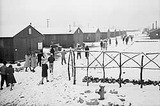
Information from the Library of Congress about the timeline of voting rights for Native Americans
- Subject:
- Social Science
- Material Type:
- Reading
- Provider:
- Library of Congress
- Date Added:
- 07/03/2024

Information from the Library of Congress about the timeline of voting rights for Native Americans

Information from the Library of Congress about the timeline of voting rights for women in the United States

Information from the Library of Congress about who can vote in today's American society.

This reading provides information regarding women's role in the temperance movement of the early 1880s.

Over the course of two lessons, students will analyze primary source documents in order to examine the factors that contributed to the exclusion of American women from the right to vote and the battle for full enfranchisement. They will read and interpret complex documents, engage in discussions, and, in order to demonstrate comprehension, answer critical thinking questions

Did the Nineteenth Amendment provide women with more than the right to vote? Which Amendment process was used? How did this Amendment affect the United States in the last one hundred years? All of these questions and many others are discussed in this lesson.

Lesson plan and primary sources from the Library of Congress about Women's Suffrage in the United States

This resource is a Social Studies student activity that utilizes Utah's Online Library resources - specifically, Gale Opposing Viewpoints in Context, Gale Discovering Collection, Gale Global Issues in Context, Gale InfoTrac Student Edition, and Gale Student Resources in Context to help students learn about World War II Japanese-American Internment.

Ted-Ed videos on 'Does Your Vote Count? The Electoral College explained', 'How do US Supreme Court justices get appointed', 'There's no such thing as not voting', 'Why do Americans vote on Tuesdays?", Gerrymandering: How drawing jagged lines can impact an election", "How is power divided in the United States government?", "How to understand power", and "What's needed to bring the US voting system into the 21st century"